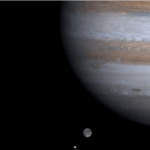[Originally published as Best Evidences for Evolution?]
I was asked to provide the best pieces of evidence I could think of for evolution and debunk them. So here goes:
Evolution is one of the most well-known and hotly disputed ideas ever introduced into science, likely because of its metaphysical and philosophical implications. Implications aside, evolution enjoys a very strong consensus among scientists. However, consensus is not a replacement for facts. At one point, there was a consensus that life could arise via spontaneous generation. Consensus does not make truth.
One example of supposed strong evidence of evolution is the concept of nested hierarchies.
Darwin and his ideological descendants believed life came from a single common ancestral species. If this were the case, it follows logically that life should fit into an ever-branching hierarchical tree. In biology, this is exactly what is observed. There is a hierarchical nature to life that permits classification to occur… provided you don’t look too deep.
The hierarchical structure of life is so well established it has been used as an analytical tool (Alexandrino et al, 2002, Turner et al, 2000). In these studies, nested hierarchies were used to analyze living populations to help determine their evolutionary history. While Turner et al were able to glean more information from their nested analysis than from a normal statistical analysis, both studies cautioned that more work was required to refine the nested analysis.
In addition, nested hierarchy is not an exclusive prediction of evolution, even if it exists. Dr. Nathaniel Jeanson happily acknowledges nested hierarchy in his book Replacing Darwin. Further, the hierarchy is not absolute nor complete. There is a grand scale of nesting, but many organisms simply cannot be nested
A second piece of evidence is chromosome-2 fusion in humans.
According to evolutionary theory, chimpanzees and humans share a common ancestor. However, they have different chromosome counts since chimps have an extra pair. To fith their assumptions, either chimpanzee genes must have undergone a chromosome duplication, or humans must have had a chromosomal fusion at some point. In this scenario, the evidence seems to favor the latter. Ijdo et al (1991) identified telomeric repeats in human chromosome 2 and proposed that they were the leftovers of a fusion event that occurred as human ancestors evolved into modern humans. This idea has since been strengthened by other researchers (Weinberg et al, 1994, Trask et al, 2002).
This particular evidence has generated quite a bit of pushback from creationists, leading to several articles in creationist journals. Tompkins (2013) argued that the site of the fusion was functional, which negated fusion. Other evidence has come out since then, further negating fusion.
Further, on a population genetics level, fusion makes no sense. The event would have had to happen, then be dispersed into the pre-human populations. Yet genetic drift tells us that the likelihood of such a trait reaching fixation is the same as its starting frequency. Even if we give the evolutionist their 10,000-strong starting populations of humans, the chance of the one that had a fusion spreading his genes to the whole population is 1 in 10000. And that’s a best-case scenario.
Another evidence of evolution is the concept of processed pseudogenes.
Pseudogenes are genes that have been damaged by a mutation and are no longer transcribed. Because pseudogenes exist in most organisms, comparing the mistakes in each pseudogene can help scientists infer the ancestry of the organisms in question.
The logical basis is simple. If pseudogenes share mistakes, then they are likely found in related organisms. Fairbanks and Maughan (2006) pointed out that the NANOG pseudogene family was likely fixed in the supposed common ancestor of chimps and humans, and most of them are still shared today. The fact that multiple pseudogenes are shared across the chimp-human lineage appears to be fairly good evidence that humans and chimps share a common ancestor, at least for the evolutionists.
However, this is poor logic.
For one thing, processed pseudogenes might actually have a function (Cheetham et al, 2020). That would blow the whole “shared mistakes” argument out the window. Further, even if mistakes are shared, certain elements of the genome are more prone to mutations than others, and there are only four options for a mistake. That means that finding a few mistakes that are the same would prove nothing other than that a few mistakes exist in the genome.
Another supposedly strong evidence for evolution is the fact of speciation.
In Darwin’s time, species were presumed to be fixed. However, this is not the case. Since Darwin, evidence of speciation occurring in a wide variety of organisms (see Kocher, 2004, Wendel et al, 1995, and Saetre et al, 2002). There are even good examples of recent speciation (Wang et al, 2014).
New species forming is expected within the Neo-Darwinian evolution model. However, again, this is not an exclusive prediction of evolution. Biblical creationists have accepted speciation since at least Linnaeus and evolutionists have known since at least the 1960s that creationists accept speciation (Mayr, 1965).
While evolutionists claim they have lots of evidence for evolution, some of their best pieces of evidence don’t hold water under scrutiny. Further, much of the evidence is beginning to provide evidence against evolution rather than for it. Evolution, despite the consensus, lacks solid exclusive supporting data.
References:
Alexandrino J, Arntzen JW, Ferrand N. 2002. Nested clade analysis and the genetic evidence of population expansion in the phylogeography of the golden-striped salamander, Chioglossa lusitanica (Amphibia: Urodela). Heredity. 88:66-74.
Cheetham SW, Faulkner GJ, Dinger ME. 2020. Overcoming challenges and dogmas to understand the functions of pseudogenes. Nat Rev Genet. 21:191-201.
Fairbanks DJ, Maughan PJ. 2006. Evolution of the NANOG pseudogene family in the human and chimpanzee genomes. BMC Evol Biol. 6(12).
Ijdo JW, Baldini A, Ward DC, Reeders ST, Wells RA. 1991. Origin of human chromosome 2: An ancestral telomere-telomere fusion. Proc Natl Acad Sci U S A. 88(20):9051-9055.
Mayr, Ernst Animal Species and Evolution The Belknap Press of Harvard University: Cambridge, MA 1965.
Kocher TD. 2004. Adaptive evolution and explosive speciation: the cichlid fish model. Nat Rev Genet. 5:288-298.
Saetre GP, Borge T, Lindroos K, Haavie J, Sheldon BC, Primmer C, Syvanen AC. 2002. Sex chromosome evolution and speciation in Ficedula flycatchers. Proc R Soc London B Biol Sci. 270(1510):53-59.
Trask BJ, Fan Y, Linardopoulou E, Friedman C, Williams E. Genomic structure and evolution of the ancestral chromosome fusion site in 2q13-2q14.1 and paralogous regions on other human chromosomes. Genome Res. 12:1651-1662.
Tompkins JP. 2013. Alleged human chromosome 2 “fusion site” encodes an active DNA binding domain inside a complex and highly expressed gene-negating fusion. Answers Research Journal. 6:367-375.
Turner TF, Trexler JC, Harris JL, Haynes JL. 2000. Nested cladistic analysis indicates population fragmentation shapes genetic diversity in a freshwater mussel. Genetics. 154(2):777-785.
Wang J, Liu S, Lorenzen ED, Fumagalli M, Li, B, Harris K, Xiong Z, Zhou L, Korneliussen TS, Somel M, et al. 2014. Population genomics reveal recent speciation and rapid evolutionary adaptation in polar bears. Cell. 157(4):785-794.
Wendel JF, Schnabel A, Seelanan T. 1995. Bidirectional interlocus concerted evolution following allopolyploid speciation in cotton (Gossypium). Proc Natl Acad Sci U S A. 92(1):280-284.
Wienberg J, Jauch A, Ludecke, HJ, Senger G, Horsthemke B, Claussen U, Cremer T, Arnold N, Lengauer C. 1994. The origin of human chromosome 2 analyzed by comparative chromosome mapping with a DNA microlibrary. Chromosome Res. 2:405-410.







